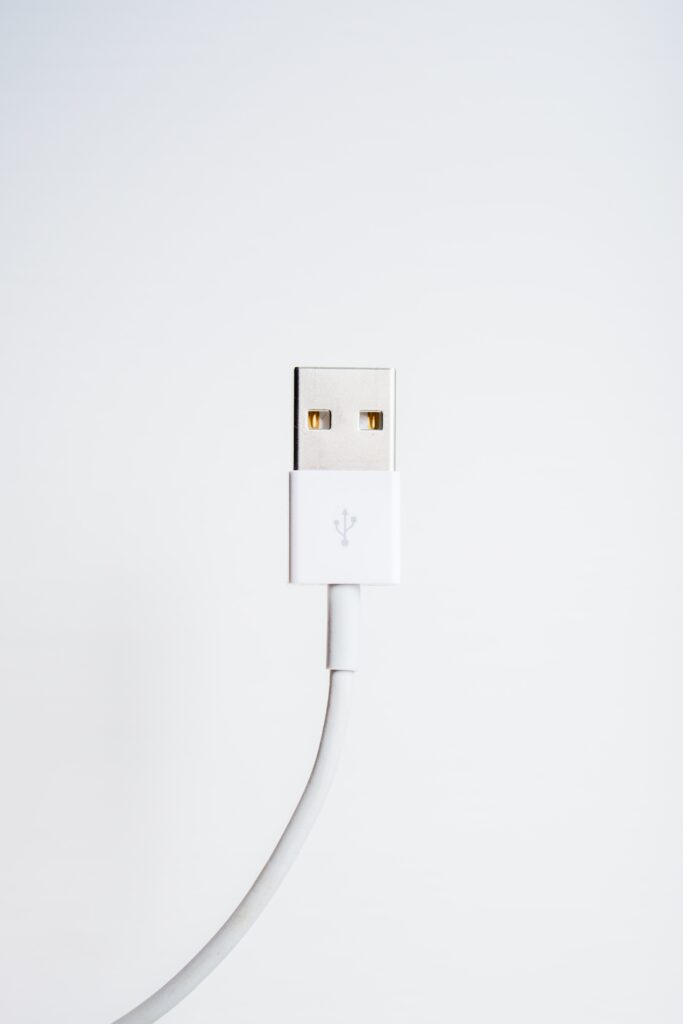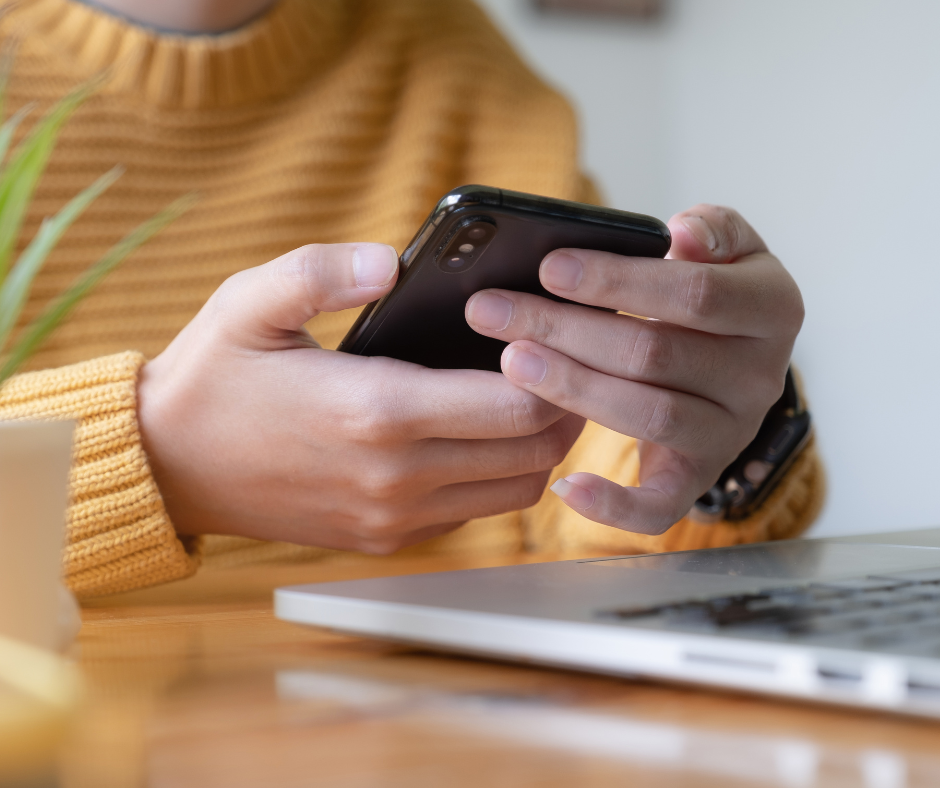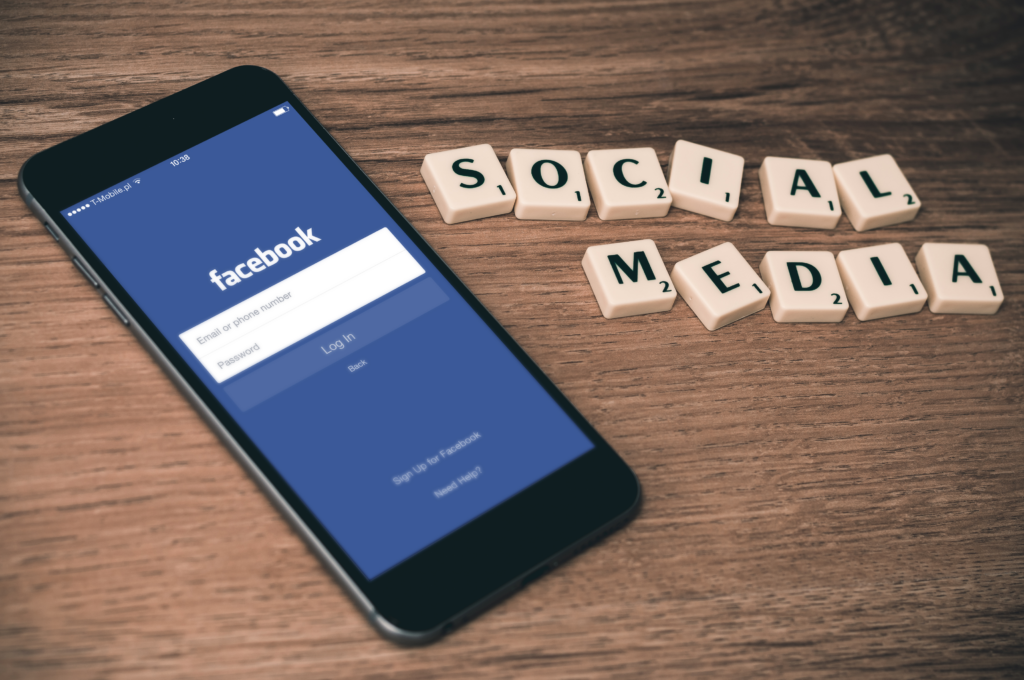
In today’s digital world, our screens have become an integral part of our daily lives. However, constant exposure to screens can take a toll on our mental well-being. That’s where a digital detox comes in. By taking a break from screens and engaging in offline activities, you can recharge your mental batteries and regain a sense of balance. In this article, we will explore the benefits of a digital detox and provide tips on how to disconnect from the digital realm and reconnect with yourself and the world around you. So, put down your phone and get ready to embark on a journey of digital rejuvenation.

Benefits of a Digital Detox
Are you feeling stressed and overwhelmed by the constant presence of screens in your life? Taking a digital detox can have numerous benefits for your mental well-being. One of the most immediate benefits is a reduction in stress and anxiety levels. Constant exposure to screens and notifications can lead to a state of constant stimulation, which can take a toll on your mental health. By disconnecting from screens, you give yourself the chance to relax and unwind, leading to a calmer state of mind.
Another benefit of a digital detox is improved focus and productivity. When you’re constantly bombarded with information and distractions from screens, it can be challenging to concentrate on important tasks. By taking a break from screens, you give your brain the opportunity to focus on one thing at a time, leading to improved productivity and efficiency.
Along with improved focus, a digital detox can enhance your creativity and problem-solving skills. When you’re constantly consuming information from screens, it can be difficult for your brain to come up with its own ideas. By taking a break from screens and engaging in activities that stimulate your creativity, such as reading or engaging in hobbies, you give your brain the chance to think outside the box and come up with innovative solutions to problems.
Increased mindfulness and well-being are also benefits of a digital detox. When you’re constantly connected to screens, you may find yourself constantly thinking about what’s happening online or worrying about missing out on something. By disconnecting from screens, you can fully immerse yourself in the present moment and practice mindfulness. This can lead to a greater sense of well-being and a deeper appreciation for the world around you.
Lastly, a digital detox can improve your sleep quality. The blue light emitted by screens can interfere with your body’s natural sleep-wake cycle, making it harder to fall asleep and stay asleep. By avoiding screens before bed and replacing screen time with relaxing activities, such as reading or practicing mindfulness, you can promote better sleep and wake up feeling refreshed and rejuvenated.
Understanding Screen Addiction
With the increasing prevalence of screens in our lives, it’s important to understand the concept of screen addiction and its potential impact on our mental health. Screen addiction, also known as internet addiction or digital dependency, refers to the excessive and compulsive use of screens that interferes with daily life.
There are several common symptoms of screen addiction to watch out for. These include feeling anxious or irritable when unable to access screens, neglecting personal responsibilities and relationships due to excessive screen use, experiencing withdrawal symptoms when attempting to cut down on screen time, and feeling preoccupied with screens and constantly thinking about using them.
Excessive screen time can have a significant impact on mental health. Research has shown that spending too much time on screens is associated with increased feelings of depression and anxiety. It can also contribute to feelings of loneliness and isolation, as excessive screen use often replaces face-to-face social interactions.
Several factors can contribute to the development of screen addiction. One factor is the convenience and accessibility of screens. With smartphones and tablets always within reach, it’s easy to constantly engage with screens throughout the day. The addictive nature of certain apps and social media platforms can also contribute to screen addiction, as they are designed to keep users hooked and constantly coming back for more.
It’s important to be able to recognize the signs of screen addiction in yourself or in others. If you find that you’re unable to cut down on screen time despite negative consequences, or if screens are negatively impacting your relationships and daily functioning, it may be a sign that you’re struggling with screen addiction. Being aware of these signs can help you take the necessary steps to address the issue and regain control of your screen usage.

Creating a Digital Detox Plan
Now that you understand the benefits of a digital detox and the potential impact of screen addiction, it’s time to create a plan to successfully disconnect from screens. Here are some steps to help you create a digital detox plan that works for you:
Assessing your digital habits
The first step in creating a digital detox plan is to assess your current digital habits. Take some time to reflect on how much time you spend on screens each day and what activities or apps you spend the most time on. This self-awareness will help you identify areas where you may need to make changes.
Setting goals and boundaries
Once you have assessed your digital habits, it’s important to set clear goals and boundaries for your digital detox. Decide on the amount of time you want to spend on screens each day and what specific activities or apps you want to limit or avoid altogether. Setting realistic goals and firm boundaries will make it easier to stick to your digital detox plan.
Identifying alternative activities
To make your digital detox successful, it’s important to identify alternative activities that you can engage in during your screen-free time. Consider activities that you enjoy and that bring you fulfillment, such as reading books, engaging in hobbies, spending time outdoors, or connecting with loved ones. Having alternative activities to focus on will make it easier to resist the temptation of screens.
Designating tech-free zones and times
Creating tech-free zones and times in your daily life is another effective strategy for disconnecting from screens. Designate specific areas in your home, such as your bedroom or dining area, where screens are not allowed. Similarly, set specific times throughout the day, such as meal times or before bed, where you commit to being screen-free.
Utilizing digital tools to manage screen time
While the irony may not be lost on you, there are actually several digital tools available that can help you manage your screen time. There are apps that can track your screen time and provide you with insights and reminders to take breaks. By utilizing these tools, you can gain a better understanding of your screen usage patterns and make adjustments as needed.

Digital Detox Activities
During your digital detox, it’s important to engage in activities that will help you recharge and rejuvenate away from screens. Here are some digital detox activities that can help you make the most of your time:
Engaging in outdoor and physical activities
Spending time outdoors and engaging in physical activities can be incredibly beneficial during a digital detox. Not only does it help you disconnect from screens, but it also provides numerous physical and mental health benefits. Go for a hike, take a bike ride, or simply go for a walk in nature. The fresh air and physical exercise will leave you feeling invigorated and rejuvenated.
Practicing mindfulness and meditation
Mindfulness and meditation are powerful tools for reconnecting with the present moment and calming the mind. During your digital detox, take some time each day to practice mindfulness or meditation. This can be as simple as sitting quietly and focusing on your breath or engaging in a guided meditation practice. By practicing mindfulness, you can increase your overall sense of well-being and reduce stress and anxiety.
Reading books and engaging in hobbies
One of the best ways to disconnect from screens is to immerse yourself in a good book or engage in a hobby that you enjoy. Reading books stimulates the imagination, enhances cognitive abilities, and provides an escape from the digital world. Similarly, engaging in hobbies such as painting, knitting, or playing a musical instrument can help you reconnect with your creative side and provide a sense of fulfillment.
Connecting with nature
Nature has a way of grounding us and providing a sense of peace and tranquility. Take advantage of your digital detox to spend time in nature. Whether it’s visiting a local park, going to the beach, or simply sitting in your backyard, connecting with nature can help you feel more grounded and centered.
Strengthening personal relationships
One of the often-overlooked aspects of excessive screen time is the impact it can have on personal relationships. During your digital detox, make it a priority to spend quality time with loved ones. Plan outings or activities together, have meaningful conversations, and create lasting memories. By strengthening your personal relationships, you’ll find greater fulfillment and happiness in your life.

Effectively Disconnecting from Screens
To effectively disconnect from screens, it’s important to implement strategies that will help you reduce screen time and break the habit of constant screen checking. Here are some strategies to help you effectively disconnect from screens:
Benefits of turning off notifications
One simple yet impactful strategy is to turn off notifications on your devices. Constant notifications can be a constant source of distraction and temptation to check your phone or other devices. By turning off notifications, you eliminate the immediate need to constantly check your screen and allow yourself to be present in the moment.
Using airplane mode and do not disturb settings
Another effective strategy is to utilize airplane mode or the do not disturb setting on your phone. By activating these settings, you can temporarily disconnect from the online world and reduce the temptation to check your phone. This can be particularly helpful during meal times, when spending quality time with loved ones, or when you’re trying to relax and unwind.
Unplugging on weekends or vacation time
To truly disconnect from screens, consider implementing regular screen-free periods in your life. Whether it’s on weekends or during vacation time, carve out specific periods where you commit to being completely unplugged. Use this time to engage in offline activities, spend time with loved ones, and relax without the constant distraction of screens.
Engaging in offline social interactions
One of the downsides of excessive screen time is the impact it can have on face-to-face social interactions. Make a conscious effort to engage in offline social interactions during your digital detox. Meet up with friends for coffee, have a family game night, or attend social events in your community. By prioritizing offline social interactions, you’ll strengthen your relationships and enjoy more meaningful connections.
Finding balance between work and personal life
One of the challenges of the digital age is the blurring of boundaries between work and personal life. It’s important to establish clear boundaries and find a balance between work and personal screen time. Set specific hours for work-related screen use and commit to disconnecting after a certain time each day. By creating a separation between work and personal life, you’ll be better able to recharge and enjoy your personal time without the constant demands of screens.

Overcoming Challenges and Temptations
While a digital detox can bring many benefits, it’s important to acknowledge that it can also come with its fair share of challenges and temptations. Here are some strategies to help you overcome these challenges:
Dealing with fear of missing out (FOMO)
One of the common challenges of disconnecting from screens is the fear of missing out on important information or social events. To overcome this fear, remind yourself that taking a break from screens is essential for your well-being and that the world will still be there when you return. Focus on the present moment and the activities you’re engaging in during your digital detox, rather than what you may be missing out on.
Managing boredom and restlessness
Another challenge of a digital detox is managing boredom and restlessness that may arise when you’re not constantly engaged with screens. Embrace these feelings as an opportunity for self-reflection and growth. Use this time to explore new activities, hobbies, or interests, or simply allow yourself to be bored and see where your mind takes you.
Creating a supportive environment
Surrounding yourself with a supportive environment can greatly help you overcome challenges and temptations during your digital detox. Let your family and friends know about your digital detox and ask for their support and understanding. Plan activities or outings with loved ones that don’t involve screens, and hold each other accountable for sticking to the detox.
Finding alternative forms of entertainment
During your digital detox, it’s important to find alternative forms of entertainment to replace the time you would typically spend on screens. Engage in activities that bring you joy and fulfillment, such as playing board games, doing puzzles, or trying out new recipes. By finding alternative forms of entertainment, you’ll be less likely to feel the need to turn to screens for amusement.
Supporting and motivating others during a digital detox
If you’re embarking on a digital detox with others, it’s important to support and motivate each other throughout the process. Encourage each other to stay committed to the detox, share tips and strategies for managing screen time, and celebrate each other’s progress. By working together, you can create a supportive and motivating environment that will increase your chances of success.
Maintaining and Extending Digital Detox Practices
Once you’ve completed your initial digital detox, it’s important to maintain and even extend the practices you’ve established. Here are some strategies for maintaining and extending your digital detox practices:
Developing new habits and routines
During your digital detox, you may have discovered new activities or habits that you enjoy and find fulfilling. Incorporate these activities into your daily life even after your detox is over. By developing new habits and routines that prioritize offline activities, you can maintain the benefits of your digital detox and continue to recharge away from screens.
Accountability and tracking progress
Maintaining accountability and tracking your progress can be helpful in sustaining your digital detox practices. Share your goals and progress with a trusted friend or family member who can help hold you accountable. Use apps or journals to track your screen time to monitor your progress and identify areas where you may need to make adjustments.
Reintroducing technology mindfully
While the purpose of a digital detox is to disconnect from screens, it’s important to remember that technology plays an important role in our daily lives. When you’re ready to reintroduce technology into your routine, do so mindfully. Establish clear boundaries and goals for your screen usage, and be aware of any signs of slipping back into unhealthy screen habits.
Seeking professional help if needed
If you’re struggling with severe screen addiction or finding it difficult to maintain your digital detox practices, it may be helpful to seek professional help. A therapist or counselor can provide guidance and support as you navigate the challenges of screen addiction and work towards a healthier relationship with screens.
Encouraging periodic digital detoxes
Lastly, encourage yourself and others to engage in periodic digital detoxes. Taking regular breaks from screens is essential for maintaining a healthy balance in the digital age. Set aside designated periods throughout the year where you commit to disconnecting from screens and prioritizing offline activities. By making digital detox a regular part of your lifestyle, you can continue to reap the benefits of unplugging from screens.

Digital Detox for Children and Teens
While digital detox is important for individuals of all ages, it’s particularly important to address screen time and technology use in children and teens. Here are some considerations for implementing a digital detox for children and teens:
Impact of screen time on child development
Excessive screen time can have a significant impact on the development of children and teens. It can affect cognitive development, social skills, and physical health. It’s important to set clear limits and boundaries around screen time to ensure a healthy balance between technology use and other activities.
Ensuring balance and healthy tech usage
When implementing a digital detox for children and teens, it’s important to ensure a balance between technology use and other activities. Encourage them to engage in a variety of activities, such as outdoor play, reading, and hobbies. Set clear guidelines for screen time and encourage them to take regular breaks from screens.
Setting age-appropriate digital guidelines
Age-appropriate digital guidelines are crucial for children and teens. What may be appropriate for a teenager may not be appropriate for a younger child. Consider the child’s age, maturity level, and individual needs when setting digital guidelines. Limit exposure to screens for young children and gradually introduce more screen time as they grow older.
Promoting outdoor play and creativity
Outdoor play and creativity are essential for the healthy development of children and teens. Encourage them to spend time outdoors, engage in physical activities, and explore their creative abilities. Provide them with opportunities for unstructured play and limit the use of screens during playtime.
Maintaining open communication
One of the most important aspects of a digital detox for children and teens is maintaining open communication. Talk to them about the importance of a healthy balance between technology use and other activities. Listen to their concerns and challenges, and work together to establish guidelines that work for the whole family.
The Role of Technology in Self-Care
While the focus of a digital detox is to disconnect from screens, it’s important to recognize that technology can also play a positive role in self-care. Here are some ways in which technology can contribute to your overall well-being:
Utilizing digital apps for mental well-being
There are numerous digital apps available that can support your mental well-being. From meditation and mindfulness apps to apps that help you track and manage stress, technology can provide valuable tools for self-care. Explore different apps and find ones that resonate with you and support your mental health goals.
Tracking and managing screen time
Technology can also help you track and manage your screen time. Many apps and devices have built-in features that allow you to monitor your screen time and set limits. By utilizing these tools, you can gain insights into your screen usage patterns and make adjustments as needed.
Finding supportive online communities
One of the benefits of technology is the ability to connect with like-minded individuals through online communities. Whether it’s joining a social media group dedicated to a specific interest or participating in online support groups, technology can provide a platform for connecting with others and receiving support.
Engaging in positive online activities
While it’s important to be mindful of the potential negative impact of excessive screen time, there are also positive online activities that can contribute to your well-being. Engage in activities such as online courses or educational platforms that allow you to learn new skills or pursue personal interests. Use technology as a tool for personal growth and self-improvement.
Maximizing the benefits of technology
Ultimately, the role of technology in self-care is about maximizing its benefits while maintaining a healthy balance. Use technology intentionally and selectively to support your well-being goals. Be mindful of your screen time and make conscious choices about how you engage with technology. By finding a healthy balance, you can harness the benefits of technology without allowing it to negatively impact your well-being.
Conclusion
In today’s digitally-connected world, taking a break from screens and engaging in a digital detox is more important than ever. The benefits of a digital detox include reduced stress and anxiety levels, improved focus and productivity, enhanced creativity and problem-solving skills, increased mindfulness and well-being, and better sleep quality. Understanding screen addiction and its impact on mental health is crucial for recognizing the signs and taking the necessary steps towards a healthier relationship with screens.
Creating a digital detox plan involves assessing your digital habits, setting goals and boundaries, identifying alternative activities, designating tech-free zones and times, and utilizing digital tools to manage screen time. During a digital detox, engaging in outdoor and physical activities, practicing mindfulness and meditation, reading books and engaging in hobbies, connecting with nature, and strengthening personal relationships are all beneficial activities.
To effectively disconnect from screens, turn off notifications, use airplane mode and do not disturb settings, unplug on weekends or vacation time, engage in offline social interactions, and find a balance between work and personal life. Overcoming challenges and temptations involves dealing with fear of missing out (FOMO), managing boredom and restlessness, creating a supportive environment, finding alternative forms of entertainment, and supporting and motivating others during a digital detox.
Maintaining and extending digital detox practices can be achieved by developing new habits and routines, maintaining accountability, reintroducing technology mindfully, seeking professional help if needed, and encouraging periodic digital detoxes. When it comes to children and teens, it’s important to consider the impact of screen time on child development, ensure balance and healthy tech usage, set age-appropriate digital guidelines, promote outdoor play and creativity, and maintain open communication.
While a digital detox focuses on unplugging from screens, technology can still play a positive role in self-care. Utilizing digital apps for mental well-being, tracking and managing screen time, finding supportive online communities, engaging in positive online activities, and maximizing the benefits of technology are all ways in which technology can contribute to your overall well-being.
In conclusion, a digital detox is an essential practice in the modern age. By taking charge of your personal well-being, finding a healthy balance between technology and life, and embracing the benefits of unplugging from screens, you can recharge your mental batteries and live a more fulfilling and connected life.




